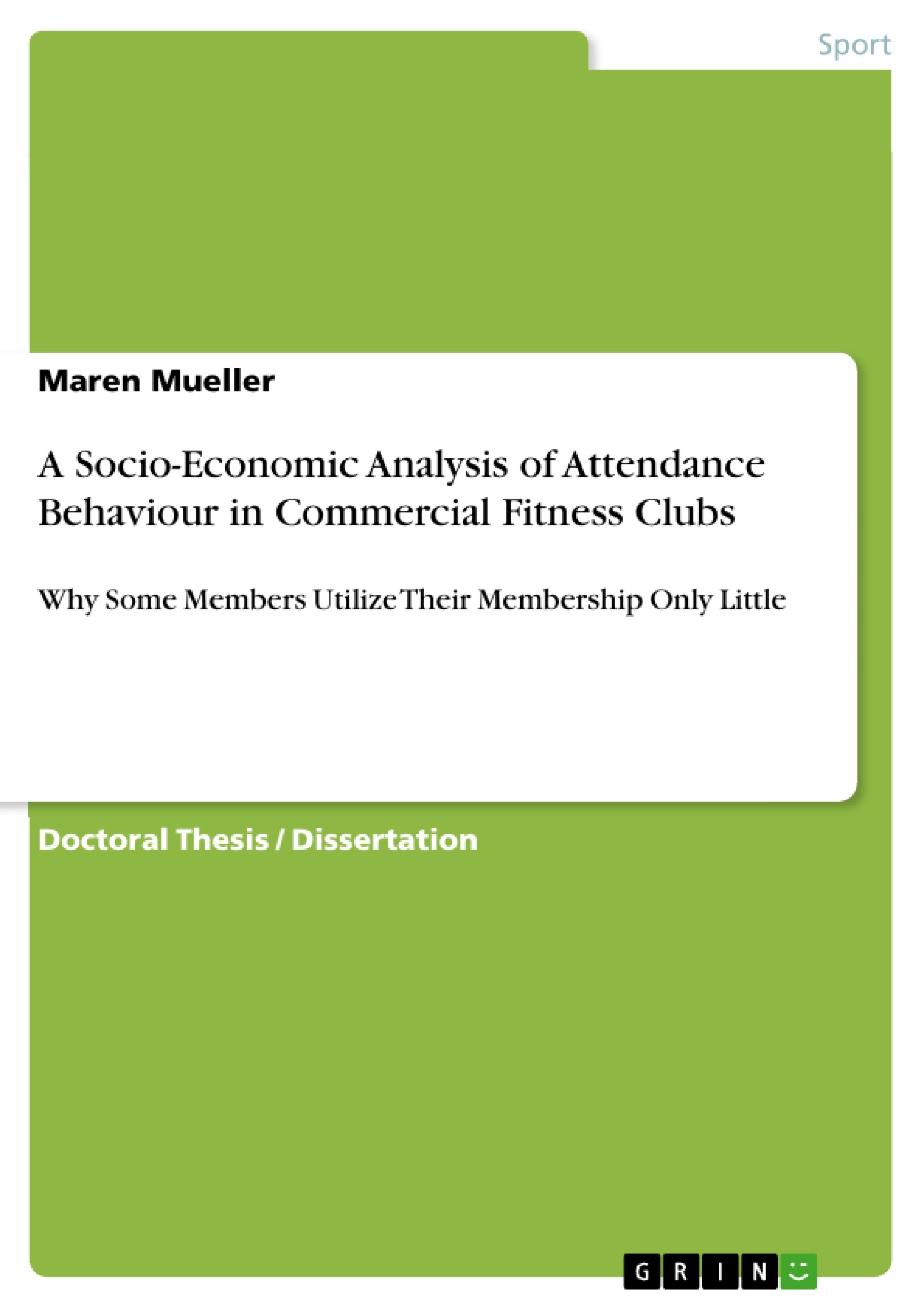The study examines the question why some members utilitze their fitness club membership only little. This behaviour seems to be odd under microeconomic theory assuming human beings to maximize profits. An estimated 30% of fitness club members in Germany utilize their membership rarely but still do not intend to cancel despite ongoing monthly fees. In order to answer the question of the thesis, utility functions are employed embedding not only traditional economic factors such as money and time but also variables from social sciences, particularly from motivation theory and sport science. Further, recent findings from flat rate effects are elaborated whether to have an impact on non-attendance behaviour.
The work adds to a young field in economics, namely to behavioural economics. Economic studies so far predominantly examined on consumption behaviour and the quantity thereof but not on possible utility of non-consumption behaviour.
The examination is not only interesting from a theoretical perspective, it also gives practical implications and recommendations to fitness club managers and fitness club consumers. Having insight into determinants of non-consumption behaviour might help fitness club managers to identify customers who attend infrequently but pay regular fees. In this, fitness club managers can implement successful acquisition and relationship management strategies. On the other hand, fitness club consumers can derive conclusions from the study in order to become aware of their behaviour and to possibly behave more cost-efficiently in the future.
Table of Contents
- 1. INTRODUCTION
- 1.1. Problem Definition
- 1.2. The Problem's Topicality and Significance
- 1.3. Structure of the Thesis
- 2. STATE-OF-THE-ART - Empirical Findings
- 2.1. Utility and Costs of Attendance
- 2.1.1. Monetary
- 2.1.2. Social/ Motivation
- 2.1.3. Motivation
- 2.2. Extra Utility
- 2.3. SUMMARY
- 2.1. Utility and Costs of Attendance
- 3. THEORY
- 3.1. PARTI - Analysis of Supply and Demand of Gym Attendance
- 3.1.1. Analysis of Demand: Why People become Members of
Commercial Fitness Clubs
- 3.1.1.1. Changes in Income and Work Time
- 3.1.1.2. Changes in Social Values
- 3.1.1.3. Body Concept
- 3.1.1.4. SUMMARY
- 3.1.2. Analysis of Supply of Gym Attendance - Constraints to
Attendance in Commercial Fitness Clubs
- 3.1.2.1. Definition of Commercial Fitness Clubs
- 3.1.2.2. Characteristics of Commercial Fitness Clubs
- 3.1.3. Interim Conclusion
- 3.1.1. Analysis of Demand: Why People become Members of
Commercial Fitness Clubs
- 3.1. PARTI - Analysis of Supply and Demand of Gym Attendance
Objectives and Key Themes
This dissertation investigates the socio-economic factors that influence attendance behavior in commercial fitness clubs. The main objective is to analyze why some members utilize their membership only minimally, despite the financial investment in the membership. This analysis aims to deepen the understanding of consumer behavior within the fitness industry.- Consumer behavior in commercial fitness clubs
- Socio-economic factors influencing attendance
- Analysis of supply and demand of gym attendance
- The role of motivation and social values
- The impact of body image on membership utilization
Chapter Summaries
The introductory chapter defines the research problem, outlining the topicality and significance of understanding why some members of commercial fitness clubs utilize their membership sparingly. It also provides a framework for the subsequent chapters. Chapter 2 delves into the existing empirical findings on utility and costs associated with attending fitness clubs, exploring both monetary and non-monetary aspects, such as social motivations and individual goals. Chapter 3 lays out the theoretical framework for analyzing supply and demand of gym attendance, examining factors influencing individual decisions to join fitness clubs, including changes in income and work time, evolving social values, and personal body image. The chapter concludes with a discussion of the characteristics of commercial fitness clubs.Keywords
This dissertation explores key topics in the field of sport economics and consumer behavior, focusing on the analysis of attendance behavior within the commercial fitness industry. Central keywords include: attendance behavior, commercial fitness clubs, socio-economic factors, consumer behavior, utility and costs, supply and demand, motivation, social values, body image, and membership utilization.- Quote paper
- Maren Mueller (Author), 2012, A Socio-Economic Analysis of Attendance Behaviour in Commercial Fitness Clubs, Munich, GRIN Verlag, https://www.grin.com/document/197829



